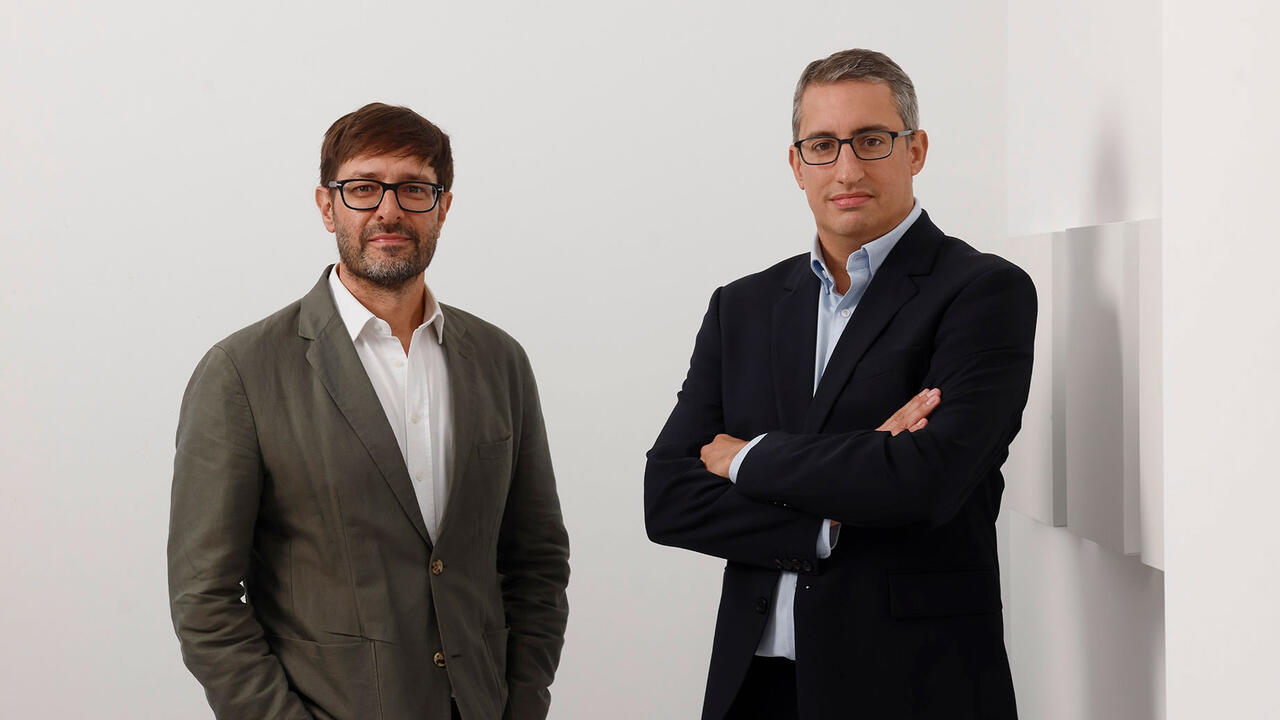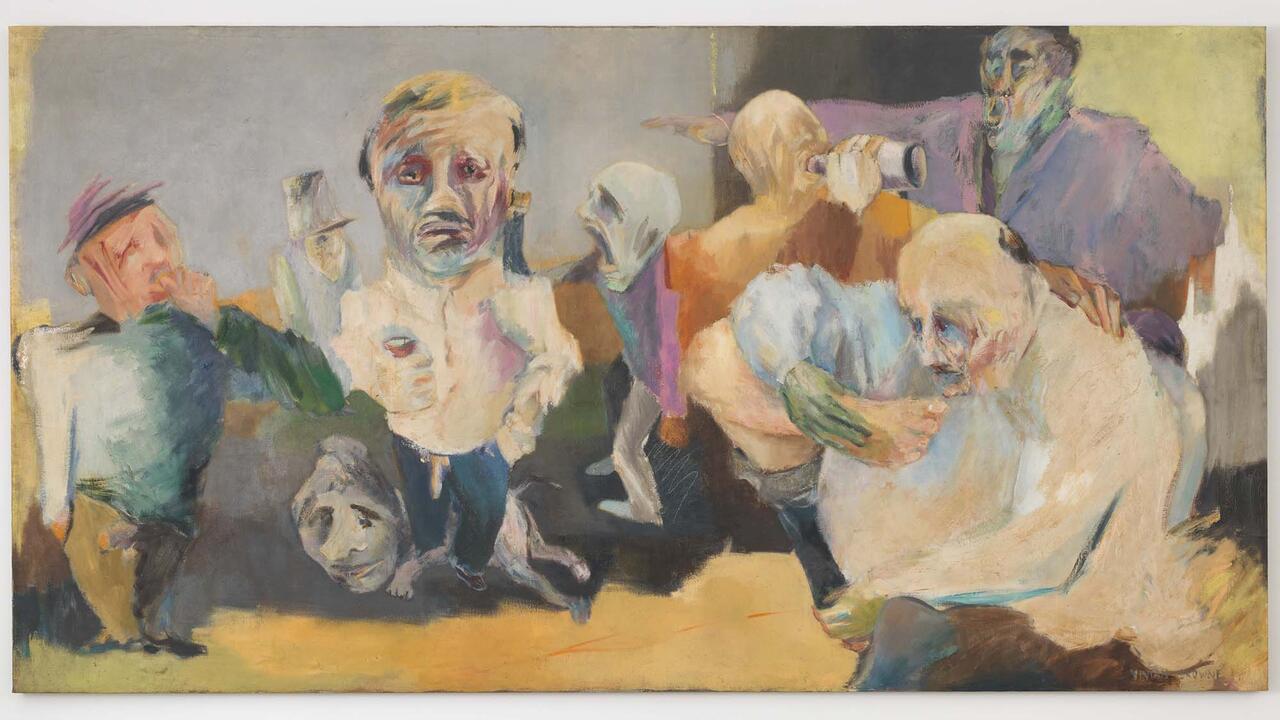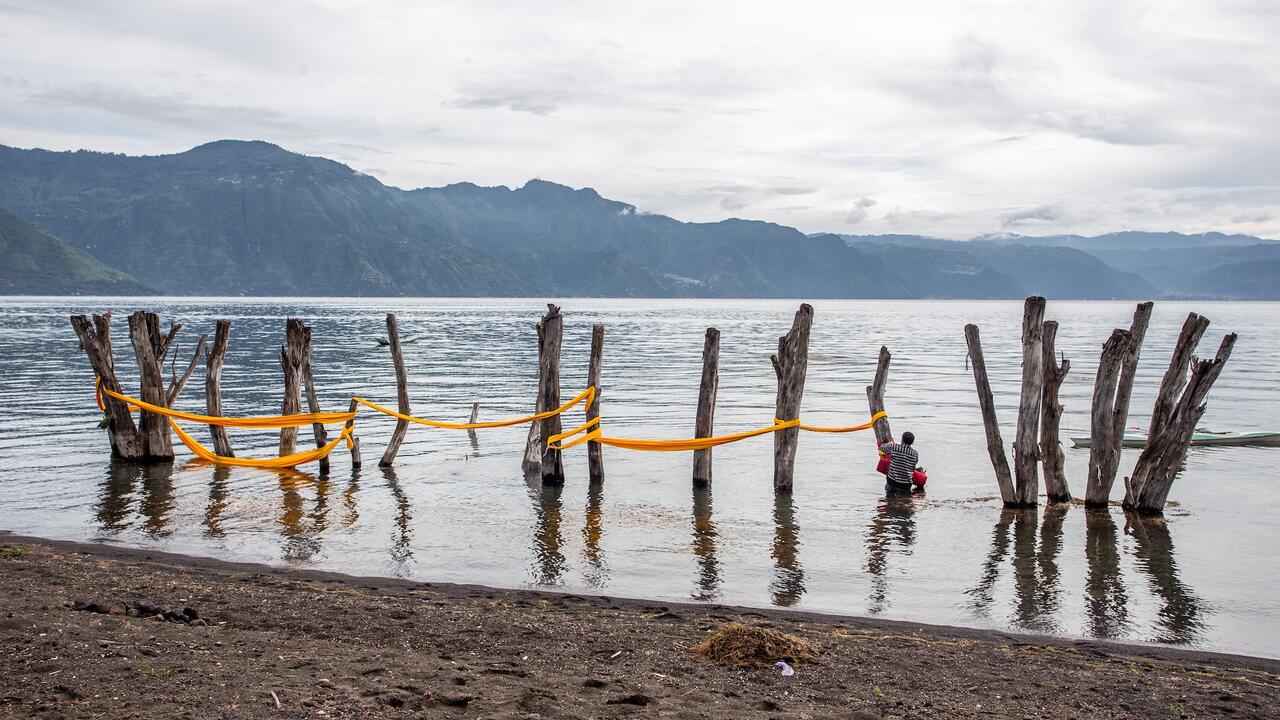1st Former West Congress
Utrecht, Holland
Utrecht, Holland
That some cultures remain haunted by the idea of their own ‘belatedness’ and their need to ‘catch up’ with ‘the West’ were recurrent themes at the ‘1st Former West Congress’, a packed-to-the-rafters three-day event in Utrecht, Holland, sponsored by the BAK contemporary art centre, the Centre for the Humanities at Utrecht University, and the Vanabbemuseum in Eindhoven. ‘Former West’ is the title of an ambitious, long-term research initiative geared toward measuring the impact the year 1989 has had on the art of the West through a series of conferences, publications and exhibitions that ally post-socialist perspectives with post-colonial thinking on social and historical change. (Video of the congress can be viewed here.)

Unfortunately, ‘belatedness’ and the need to ‘catch up’ not only plagued my arrival at the congress (my train from Paris was delayed 24 hours due to a Belgian train strike), they deferred my delivery of this report, which was filed two months after the congress took place, on November 5, 6 and 7 – the eve of the anniversary of the fall of the Berlin Wall. Its postponement, however, should in no way reflect on the timeliness and ongoing relevance of this initiative, which will develop further over the next four years.

Maria Hlavajova
‘Former West’ suggests that the social, historical and political transformations since the fall of communism in the geographic region we refer to conveniently as the ‘former East’ – the Soviet Union and the communist states of Eastern and Central Europe – have contributed, as post-colonial geo-political reorientations have, to a fundamental shift in the identity and hegemony of the West, which urgently needs to be historicized and theorized. To open this dialogue, the congress brought together a diverse roster of (mostly European or Europe-based) artists, activists, art school directors and teachers, PhD students, curators, critics, academics and museum directors.

Left-right: Sarat Maharaj, Boris Groys, Paul Gilroy
The first day of talks, which I wound up watching via a live stream from home after failing to secure alternative travel arrangements to Utrecht, featured keynote lectures by Sarat Maharaj, Boris Groys, Paul Gilroy and Renata Selacl, grouped under the theme ‘Histories and Narratives: Between the Post-Communist and the Post-Colonial (1989–2009)’. This disparate set of thinkers, united by a flair for theatrical presentation, articulated key questions that would be mulled over for the remainder of the conference: what is the nature of historical experience and of historical development post-1989 and what are its political implications? (Groys); what does it mean to be ‘former’ in a configuration that does not simply oppose the former East and former West, but includes the emerged South? (Marahaj); does the idea of the former West occlude imperial exclusions and the resurgence of neo-colonial relationships? (Gilroy); and how does the illusion of free and infinite choice promoted by present capitalist ideology define subjectivity and forestall social and political engagement? (Selacl).

Left-right: David Riff, Pablo Lafuente, Kerstin Stakemeier, Tom Holert
Once en route to Holland, the Thalys train Wi-Fi allowed me intermittent access to the following morning’s discussion on the 1990s between Tom Holert, Pablo Lafuente and Cosmin Costinas. The figure of the ‘cultural producer’ surfaced from Holert’s paper, and popped up regularly over the next few days as a kind of aesthetic and intellectual cross-pollinating agent of self-organization and institutional experimentation, and as the most representative protagonist of a perceived transition away from the fabrication of artistic objects for display and consumption toward ‘artistic and knowledge production’.

Marion von Osten
The importance of local contexts in the bigger picture of the ‘Former West’ was emphasized in artist Marion von Osten and Kerstin Stakemeier’s lively discussion about the potentialities and perils of self-organization in the ‘90s and into the 21st century. They generously offered a bracing, self-reflexive contextualization of their own marriage of the personal and political, for example, in Von Osten’s artistic and curatorial work at the Shedhalle Zürich, and in Stakemeier’s research and activism. The question of whether or not activism as such can have any political purchase when supported by art institutions arose as a thorny one. Via a discussion of new institutionalism and state-funded critical art practice in the German context, Stakemeier argued that, ‘political art imagines itself to be the diaspora of political engagement,’ and soberly pointed out that so-called political art is more frequently than not dissociated from the political claims and political engagements of political organizations. Following on from Von Osten and Stakemeier, Ana Longoni’s presentation of her practice as a member of the Red de Conceptualismos del Sur (Web of Southern Conceptualism) and of Argentinian activist art, coupled with Nuria Enguita Mayo’s in-depth analysis of institutional developments in Spain, provided a nuanced picture of the intersection between artistic agency, cultural production and intersections with the public in Argentina and Spain.

Over the intense two days I spent in the congress hall, much productive discussion and talking at cross-purposes ensued, rife with subtexts, and all of it was live-streamed and supplemented by commentaries on Facebook and Twitter (Gilroy, for example, delectated in real time to ‘Listening to the best of the Euro artworld eating its own tail in Utrecht.’).
While it seems fair to say that a consensus has formed regarding the significance of the ‘cultural producer’, who displaced, or rather absorbed, the roles of the curator and the artist, the art historian and the critic, during the ‘90s and 2000s, the congress also demonstrated that the exhibition has overshadowed the individual art work as a valid object of study and as the key archival component of a history of contemporary art. For example, almost no lectures included visual analysis, though all gestured toward cultural analysis. Simon Sheikh’s paper, titled ‘A Conceptual History of Exhibition Making’, showed how a move from a history of objects and even images, towards a history of discourses and exhibitions, calls into question received art historical models based on chronological and aesthetic developments, and favours one grounded in networks of themes and concepts.

Thomas Boutoux and Okwui Enwezor
As far as exhibitions were concerned, the most significant air-time was granted to Jean-Hubert Martin’s paradigmatic 1989 exhibition ‘Magiciens de la Terre’ (Magicians of the Earth), mounted in Paris (incidentally, the waning of Paris as a cultural centre – or Paris as an instance of former Westness – was acutely manifest here, and could be a potentially fruitful topic for the organizers to consider in the future). Again, despite the notable absence of visual evidence – projected images of archival materials or of illustrations from the catalogue or works by the artists included in that exhibition – ‘Magiciens de la Terre’ materialized as an object of contestation. Interventions – by Maharaj, Lafuente, Sheikh, Thomas Boutoux, David Riff and the audience – proposed it as model and counter-model for the ‘sharing of collective intelligences’ and the ‘production of knowledge’ around colonialism and post-colonialism. Boutoux, who is writing an essay on that exhibition for Afterall Books, provided much-needed, lucid contextualization of ‘Magiciens de la Terre’ as an exhibition that primarily responded to a narrative about primitivism in art rather than to intellectual developments in the social sciences, as has been commonly asserted. According to his reading, the reactions to the exhibition have had a much greater impact on exhibition theory and practice than the show did itself.
Moscow-based David Riff threw caution, and his paper, to the wind, in an effort to respond to the question: ‘what can the former East offer the present West?’ He settled on the reply that the former East offers the former West ‘a projective surface on which to show what the West was.’ To that end, he used the example of Martin’s 3rd Moscow Bienniale (subtitled ‘Against Exclusion’), held at The Garage Centre for Contemporary Culture at the end of 2009. According to Riff, this remake of ‘Magiciens de la Terre’ attracted crowds ‘for all the wrong reasons’. He convincingly argued that Hubert’s Bienniale operated as an image of the former West transplanted into the present East, in that it staged the commencement of a dialogue around colonialism and post-colonialism that has long since been underway elsewhere (and serves as a confirmation of Russia’s cultural belatedness). He then deftly segued into a Marxist analysis of how the former East offers the former West an image of ‘renewed primitive accumulation’, the transitions, exclusions, redistributions and appropriations that occur as capitalist relations are introduced into formerly communist societies.
Riff’s off-the-cuff talk was a highlight of the conference not least because he managed to evoke a sense of the contradictions one observed and lived as capitalism began to infiltrate the everyday, and displayed an awareness that one should remain vigilant about one’s own self-contradictions. He also delivered the best quip of the conference, when discussing the re-emergence, over the last decade, of Clement Greenberg’s art theory in Russia, specifically of his 1939 essay ‘Avant-Garde and Kitsch’. The resurgence of Greenberg, he claimed, ‘made people painfully aware of the tug of the golden umbilical cord pulling them toward this Garage of Dasha Zhukova.’
There were no definitive conclusions to be made about the ‘former West’ or the ‘former Rest’, to cite Sarat Maharaj’s clever formulation, after the ‘1st Former West Congress’. However, it did instigate numerous strands for further research, offered correctives to mythologies in the making, and provided a valuable glimpse into a wide-range of practices, problematics, contexts and intellectual or artistic investments. If the November 2009 event is any indication, my bet is that the ‘Former West’ research project has the potential to advance interdisciplinary exchange around contemporary art in significant ways and will also hold true to its promise to sketch out a ‘speculative view of the history of western art after 1989.’















